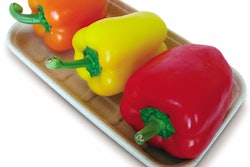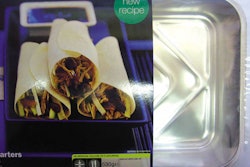Although much is being said about sustainability, companies still grapple with what sustainability means to them, and they look for ways to apply its principles to their business. There are many different paths to attain sustainability, but one often-overlooked area can yield significant results: packaging optimization.
A key misconception is that packaging sustainability improvements increase cost. This is not necessarily true. New-generation packaging materials developed for biodegradability and compostability may indeed have higher prices. However, packaging optimization combined with the use of the latest eco-friendly materials will ultimately lead to improved packaging sustainability and cost reduction.
Initiatives such as the Wal-Mart Sustainability Scorecard drive attention towards ways to reduce the environmental impact of packaging and the energy consumed to move goods. Based on the Wal-Mart scorecard, 40% of the value is related to structural packaging. The key solution for better structural packaging is better cube utilization. This results in optimized shipping and containerization.
If finished goods can be shipped more densely or with less packaging, fewer transports are required to move the same amount of goods. Less fuel is consumed, fewer emissions are generated, and improved ratios of packaging to product are achieved.
So, how do you take steps to operate a more sustainable and cost-effective business? Begin with analyzing your packaging.
Identify the right packaging size and structure
A small dimensional change in packaging can make a significant impact on logistics and freight costs. For example, a consumer goods company with offshore manufacturing had corrugated shippers measuring 40”x18”x18”. After an analysis of their supply chain, they change their shipper case to 39.5”x18”x16”. As a result, they were able to increase the number of units per ocean container by 18%. Most important, since much of their product was distributed via small parcel, the dimensional size was reduced sufficiently to qualify for regular parcel rates instead of oversized rates. That meant a 45% reduction in the domestic delivery cost.
Identifying the right packaging size and structure begins with thorough analysis of the supply chain and researching the use of materials. Developing packaging prototypes, where applicable, and conducting careful testing will help ensure the package is accurately designed for increased product protection and minimal product loss. These steps can result in optimum carton/case dimensions, complete pallet utilization, and increased trailer and container loads.
Product or packaging that is damaged during transport is costly and can result in unsatisfied customers. Insufficient or incorrect packaging leads to high product damage cost. Zero damage may indicate excessive packaging costs. Achieving the right balance between materials, packaging cost, and damage cost is key.
The graph shown here illustrates the balance between cost of damage and cost of packaging. The optimum zone may shift along the graph depending on the product’s value or the customer relationship.
One way to optimize the packaging system is to investigate where high amounts of damage occur and where zero damages are recorded. Then, fine-tune the packaging.
Determining your strategy
Modifying your packaging through changes in design and materials can alter the dimensions of your package significantly. Reducing the size and weight ultimately affects freight cost, environmental emissions, and energy use. Identify opportunities for packaging optimization by analyzing the following:
• Shipping weight—identify crates, containers, and shipping materials that add to the total weight
• Shipping densities—look for air, partially filled boxes, and empty space in containers
• Damage observation—investigate situations where high amounts of damage occur and where zero damages are recorded
• Investigate “advanced” strategies such as developing reusable manufacturing or shipping systems, postponed-packaging strategies and utilizing new-generation environmentally friendly materials. Those can include paper, molded pulp, and PLA-based polymers when effective. Optimizing packaging size, structure, and material use, as well as reducing shipping weight and cube, can lead to better sustainability and savings. And it addresses the universal priority of cost reduction.
About the Author: IoPP member Tom Blanck, CPP, is packaging solutions manager for Adalis Corp., a global packaging and supply chain solutions company headquartered in Vancouver, WA. Tom’s article is based on a presentation at the Packaging Summit Conference 2007.
For information about IoPP, visit www.iopp.org


























